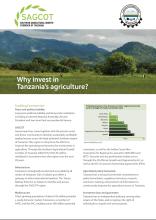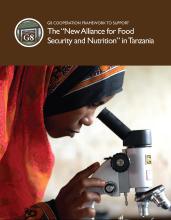/ library resources
Showing items 28 through 36 of 56.This paper details different production and investment models that are used within the SAGCOT area.
The paper highlights different early win opportunites for investors specific in the SAGCOT region
This appendix takes output from the production and investment model and sets out further detail on the development profiles of each of the six clusters, providing projections of on-farm investment, last mile infrastructure, and necessary supporting agriculture and backbone infrastructure.
Government has come together with the private sector and donor community to develop sustainable, profitable agribusinesses across the high-potential Southern region of Tanzania. This region is a key focus for efforts to improve the operating environment for investments in agriculture.
The founding document of SAGCOT, the Investment Blueprint, was developed by the founding partners encompassing government, donor partners, farmers, and the private sector. The SAGCOT Investment Blueprint details the objectives of SAGCOT and how these will be achieved.
The Southern Agricultural Growth Corridor of Tanzania (“SAGCOT”) has been established as a public private partnership with the objective to enhance Tanzania’s food security and accelerate agricultural transformation.
Tanzania has a long history of sugar cane production and it has now a prioritized national policy to attract foreign investments into modern and industrial scale sugar cane production. Between 2001 and 2010, the production of sugar in Tanzania increased from 130,000 Mt pa to 280,000 Mt pa.
Three years after the G8 Summit at L’Aquila, Italy, the international community recognizes the importance of food security to development, inclusive economic growth and the dignity of all women and men.
This case study is part of a Harvard Kennedy School CSR Initiative workstream on systemic approaches to creating business opportunity and development impact at scale.
Pagination
Land Library Search
Through our robust search engine, you can search for any item of the over 73,000 highly curated resources in the Land Library.
If you would like to find an overview of what is possible, feel free to peruse the Search Guide.









